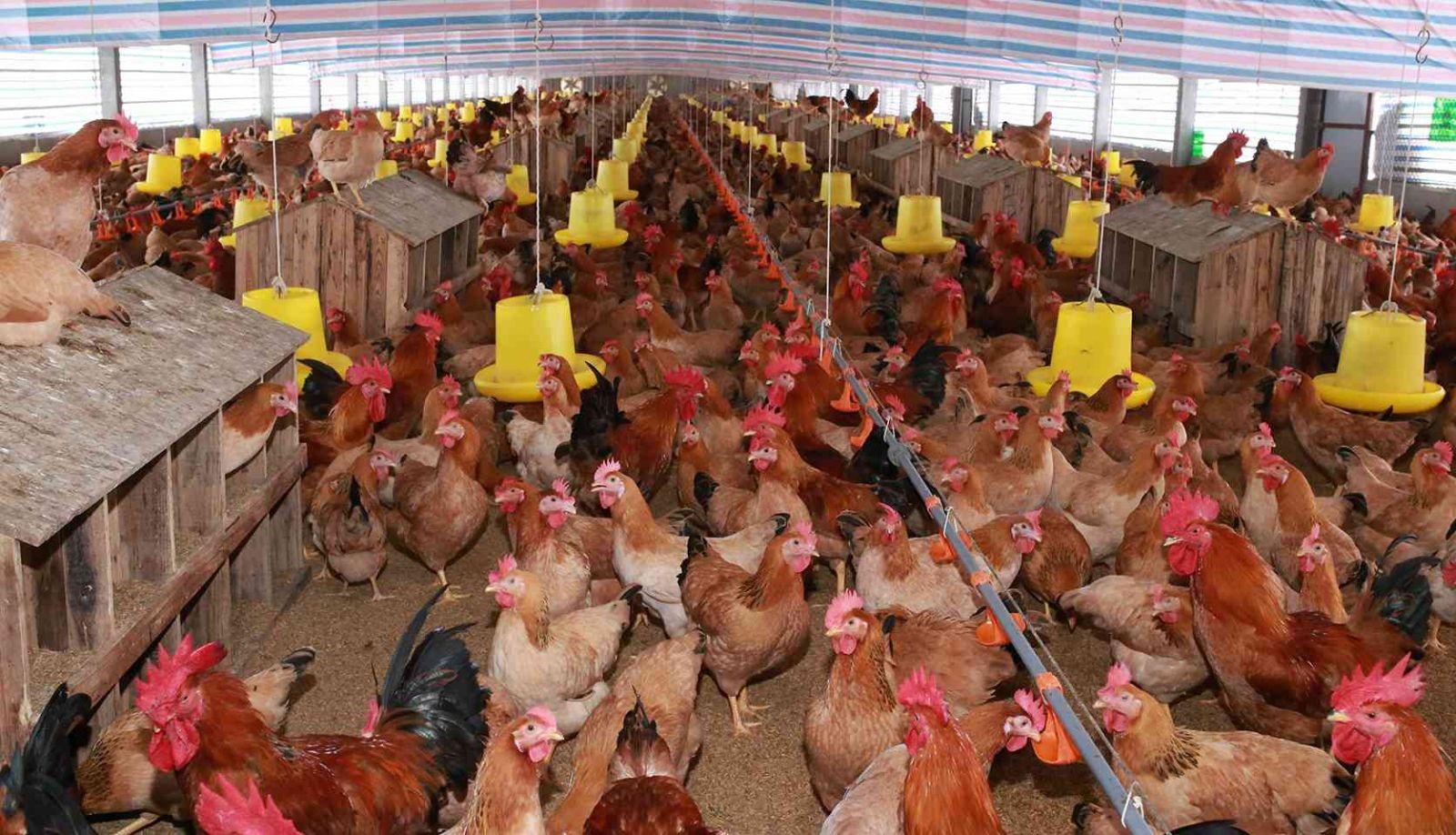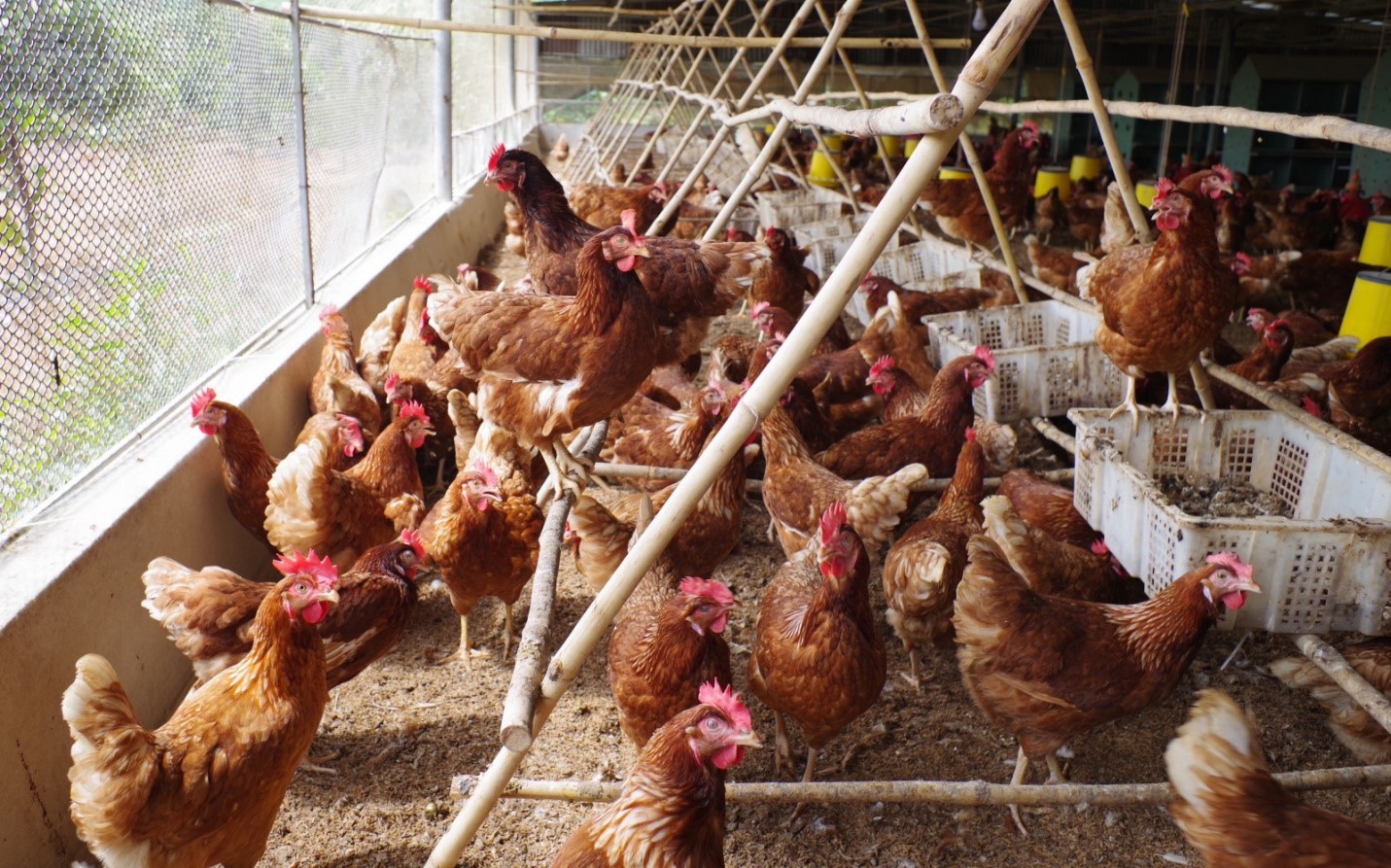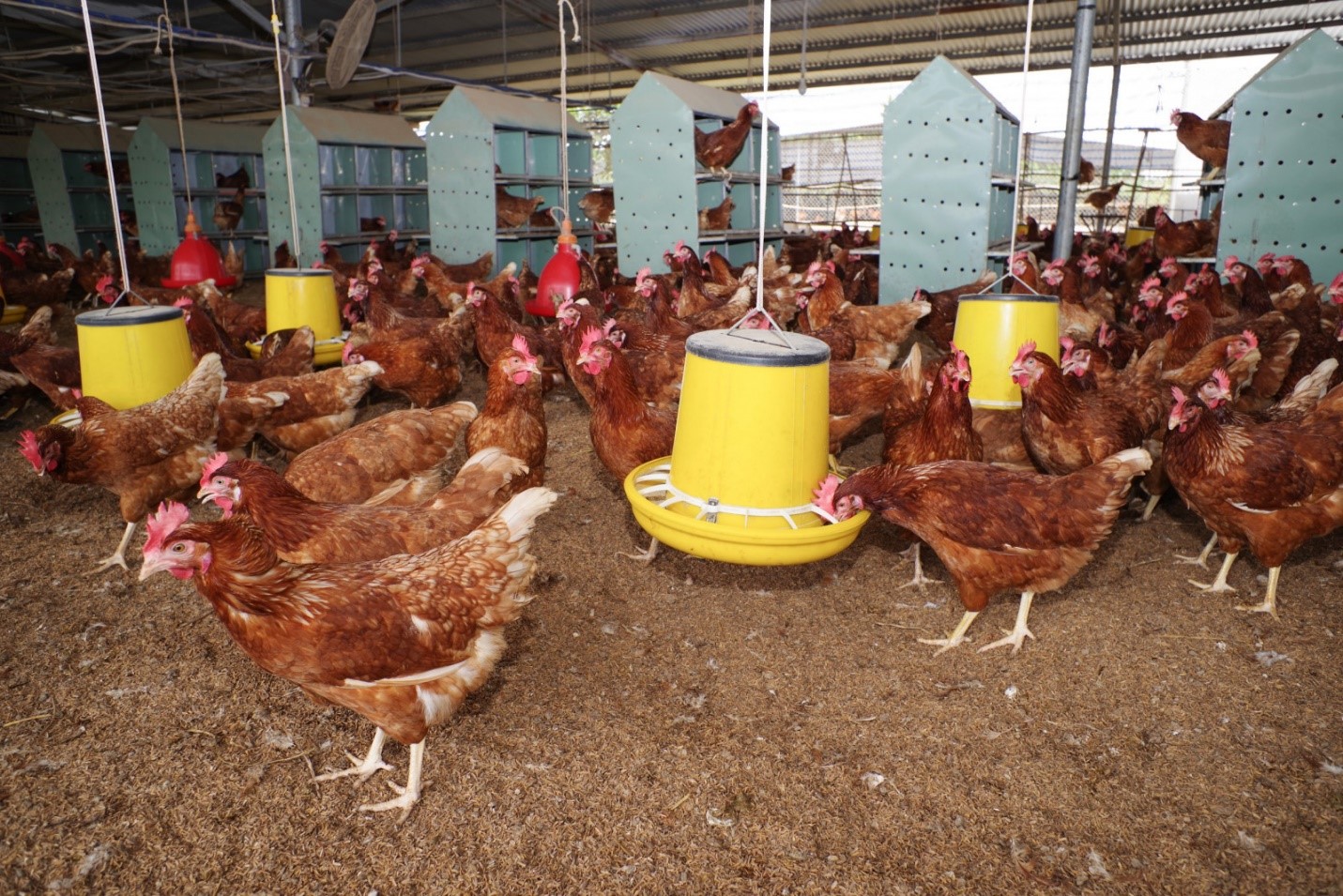In poultry farming, Infectious Laryngotracheitis (ILT) is considered one of the major threats to chicken flocks. The disease not only directly affects health, causing sudden death, but also reduces productivity.
ILT is a highly dangerous respiratory disease in chickens, commonly seen in both broiler and layer farms, and it can cause severe economic losses if timely preventive measures are not implemented.
1. CAUSES
ILT is caused by a Herpesvirus.
Characteristics of the virus:
– It can survive for a long time in the environment, particularly in the respiratory secretions of infected chickens.
– The virus spreads rapidly through direct contact when chickens sneeze or cough, or indirectly via equipment, caretakers, water sources, and air.
– Chickens from 3 weeks of age onward are susceptible, but the disease occurs most frequently in birds between 3–5 months old and in layers.
Predisposing factors for outbreaks include:
– Damp, poorly ventilated housing.
– Overcrowding.
– Sudden weather changes.
– Stress due to transportation or dietary changes.
 Image of chicken farming
Image of chicken farming
2. CLINICAL SIGNS
The incubation period of ILT is about 2–3 days. Clinical manifestations include:
– Reduced feed intake, decreased productivity (egg production or weight gain), ruffled feathers, and lethargy.
– Conjunctivitis with lacrimation and nasal discharge.
– Respiratory distress: gasping, coughing, stretching the neck upward to breathe.
– Presence of blood-stained walls, cages, or dried blood on the beak.
– Mortality begins at a low level and gradually increases depending on the severity of infection and secondary complications.
3. LESIONS
Postmortem findings in chickens that died from ILT often include:
– The mucosa of the larynx and trachea is swollen, hyperemic, inflamed, and hemorrhagic, with excessive mucus and pseudomembrane formation.
– In some cases, blood clots may obstruct the trachea, or exudates and fibrin may nearly block the airway.
– Congestion and inflammation of the lungs.

4. PREVENTION
As ILT is a viral disease, prevention is the most effective approach:
– Regular disinfection of poultry houses and equipment.
– Maintaining moderate stocking density and ensuring good ventilation.
– Prompt isolation and management of sick birds.
– Use of vaccines according to the local epidemiological situation.
4. TREATMENT
Since ILT is caused by a virus, there is no specific treatment. Supportive therapy includes:
– Antibiotics to prevent secondary bacterial infections, such as: Day 1: inject LINSPETIN in combination with GENTA 50 INJ and ENERGI 300 INJ; in severe cases, repeat injection for 2 days. Then administer oral antibiotics such as FLODOX ORAL or use DOXYLINE 500 WS combined with TIMICIN 250 ORAL. Combine with anti-inflammatory and mucolytic agents such as PHENYXIN ORAL for 3–5 days. If fever occurs, administer PARAMOL 200 WS as an antipyretic.
– In small flocks, revaccination is recommended before applying the above therapeutic regimen.
– Supplement with Vitamin C (VITA C 20%) to enhance immunity, and add probiotics (HASPRO) to stabilize gut microflora.

Infectious Laryngotracheitis (ILT) is a severe respiratory disease in poultry, capable of causing sudden mortality and significant economic losses. The most effective control strategy is proper vaccination combined with strict biosecurity, good hygiene, and appropriate flock management.
